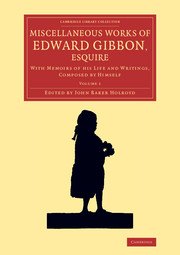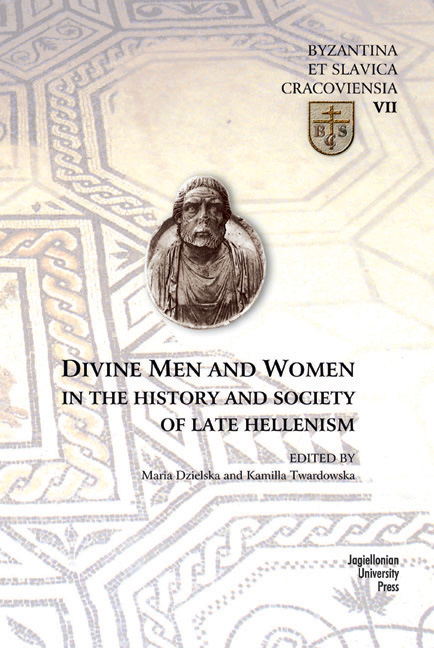Refine search
Actions for selected content:
23990 results in Ancient history
Chapter 5 - The wedding and the end of girlhood
-
- Book:
- Roman Girlhood and the Fashioning of Femininity
- Published online:
- 18 December 2014
- Print publication:
- 15 December 2014, pp 134-165
-
- Chapter
- Export citation
Index
-
- Book:
- Roman Girlhood and the Fashioning of Femininity
- Published online:
- 18 December 2014
- Print publication:
- 15 December 2014, pp 185-188
-
- Chapter
- Export citation
Contents
-
- Book:
- Roman Girlhood and the Fashioning of Femininity
- Published online:
- 18 December 2014
- Print publication:
- 15 December 2014, pp v-v
-
- Chapter
- Export citation
Roman Girlhood and the Fashioning of Femininity - Half title page
-
- Book:
- Roman Girlhood and the Fashioning of Femininity
- Published online:
- 18 December 2014
- Print publication:
- 15 December 2014, pp i-ii
-
- Chapter
- Export citation
Chapter 3 - “All kinds of exercises fitting for girls”
-
- Book:
- Roman Girlhood and the Fashioning of Femininity
- Published online:
- 18 December 2014
- Print publication:
- 15 December 2014, pp 79-104
-
- Chapter
- Export citation
Chapter 1 - Formal education and socialization in virtue
-
- Book:
- Roman Girlhood and the Fashioning of Femininity
- Published online:
- 18 December 2014
- Print publication:
- 15 December 2014, pp 15-44
-
- Chapter
-
- You have access
- HTML
- Export citation
Acknowledgments
-
- Book:
- Roman Girlhood and the Fashioning of Femininity
- Published online:
- 18 December 2014
- Print publication:
- 15 December 2014, pp vi-vi
-
- Chapter
- Export citation
Chapter 2 - Protecting virginity
-
- Book:
- Roman Girlhood and the Fashioning of Femininity
- Published online:
- 18 December 2014
- Print publication:
- 15 December 2014, pp 45-78
-
- Chapter
- Export citation

Fasti Hellenici
- The Civil and Literary Chronology of Greece, from the LVth to the CXXIVth Olympiad
-
- Published online:
- 05 December 2014
- Print publication:
- 19 September 2013
- First published in:
- 1824

Miscellaneous Works of Edward Gibbon, Esquire
- With Memoirs of his Life and Writings, Composed by Himself
-
- Published online:
- 05 December 2014
- Print publication:
- 17 April 2014
- First published in:
- 1796

The Origin of Roman London
-
- Published online:
- 05 December 2014
- Print publication:
- 08 January 2015

Divine Men and Women in the History and Society of Late Hellenism
-
- Published by:
- Jagiellonian University Press
- Published online:
- 05 December 2014
- Print publication:
- 31 December 2013

Corpus iuris civilis
-
- Published online:
- 05 December 2014
- Print publication:
- 17 April 2014

Colonization in the Ancient World
-
- Published by:
- Jagiellonian University Press
- Published online:
- 05 December 2014
- Print publication:
- 31 December 2013
1 - Phoinix and Poenus: usage in antiquity
- from Part I - Contexts
-
-
- Book:
- The Punic Mediterranean
- Published online:
- 18 December 2014
- Print publication:
- 04 December 2014, pp 11-23
-
- Chapter
- Export citation
Frontispiece
-
- Book:
- The Punic Mediterranean
- Published online:
- 18 December 2014
- Print publication:
- 04 December 2014, pp xxvii-xxviii
-
- Chapter
- Export citation
4 - Phoenicity, punicities
- from Part I - Contexts
-
-
- Book:
- The Punic Mediterranean
- Published online:
- 18 December 2014
- Print publication:
- 04 December 2014, pp 58-68
-
- Chapter
- Export citation
13 - More than neighbours: Punic–Iberian connections in southeast Iberia
- from Part II - Case studies
-
-
- Book:
- The Punic Mediterranean
- Published online:
- 18 December 2014
- Print publication:
- 04 December 2014, pp 243-256
-
- Chapter
- Export citation
The Punic Mediterranean - Title page
-
-
- Book:
- The Punic Mediterranean
- Published online:
- 18 December 2014
- Print publication:
- 04 December 2014, pp iii-iii
-
- Chapter
- Export citation
Abbreviations
-
- Book:
- The Punic Mediterranean
- Published online:
- 18 December 2014
- Print publication:
- 04 December 2014, pp xxvi-xxvi
-
- Chapter
- Export citation
